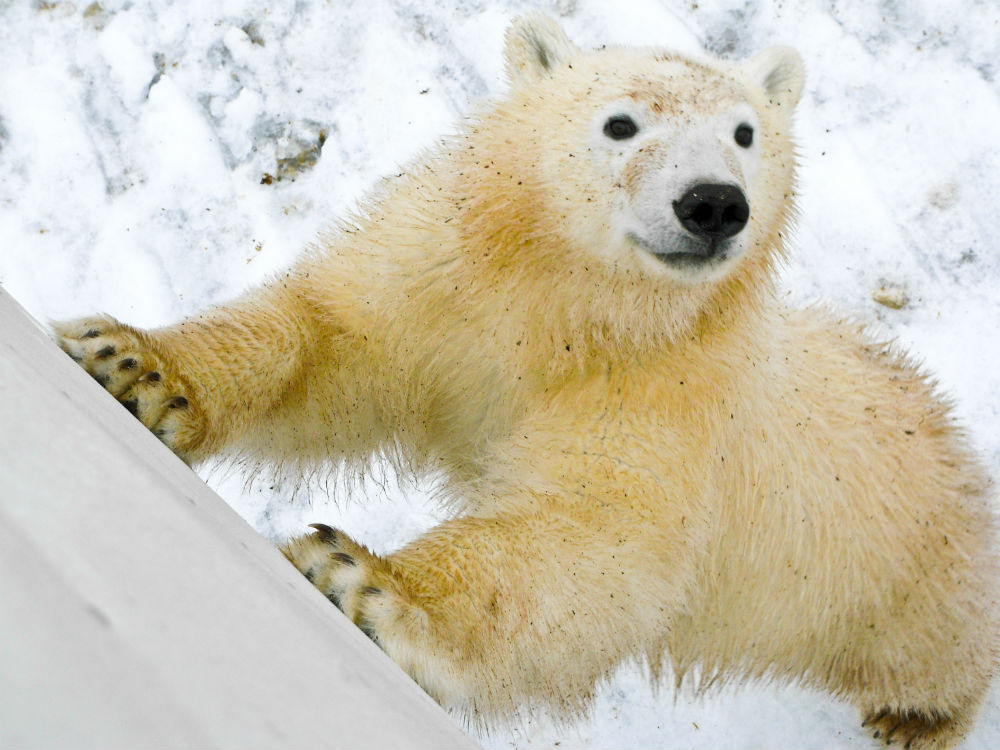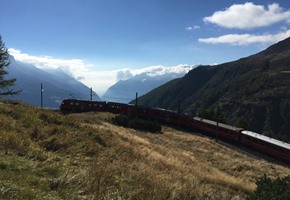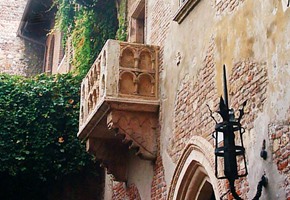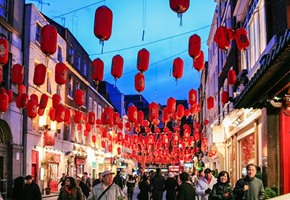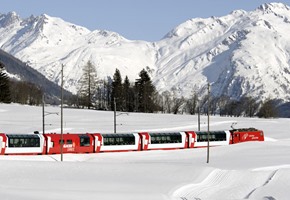I've never liked zoos, preferring to see animals in their natural setting, but polar bears are only found within the Arctic Circle, one of the remotest places on earth. They're now officially classed as a vulnerable species due to poaching and, more recently, the shrinking of Arctic ice. Although it's not quite "the last chance to see", I decide I should get there sooner rather than later. The town of Churchill, on the edge of Hudson Bay in Canada, is the ideal location to do this.
Getting there isn't easy and, after changing planes in Toronto, I arrive in Winnipeg, the capital of Manitoba. Before setting out for the frozen North, I have a morning exploring this attractive city with a newly revitalised downtown, a restored historic district which doubles for 30s Chicago in movies, and an interesting French Quarter. Now to get to Churchill from here you either take the train or the plane, since it's not connected by road. I'm keen to see polar bears as soon as possible, so I opt to fly there and save the wonderful three day rail journey for my return.
It's cold and dark when I arrive and there's thick snow on the ground, so I'm glad to check into the Lazy Bear Lodge, a cosy Eco-retreat made from reclaimed timber, with a massive stone fireplace, radiating warmth. It's mid-October and, at this time of year, around 1,000 polar bears are gathering on the shores of Hudson Bay waiting for the sea to freeze. They'll spend the winter out on the ice, hunting the seals which make up most their diet, and, having spent much of the year on land, they are understandingly hungry.
Next morning I set off for the Arctic Crawler Tundra Buggy launch area. These super-sized machines, over four metres high and ten metres long, are built specially in Churchill and provide a mobile viewing platform for forty passengers. They have large windows, an open viewing platform at the rear and, best of all, a propane heater. I'm welcomed by a knowledgeable wild life expert and I climb aboard with the rest of our group and set out over the frozen tundra.
The first hour's excitement is limited to negotiating deep ruts and ice pools as we make our way to the shore. Suddenly, right in our path, is a four year old mother and her cub, ambling along, showing no sign of being disturbed by our presence. We stop and they come close to the vehicle, so near that I can hear the cub making a low hissing sound at his mother. This is known as "chuffing" and is essential polar bear communication. In the distance I spy the reason for his concern. There's another bear approaching and mum decides to avoid any conflict and run off with junior.
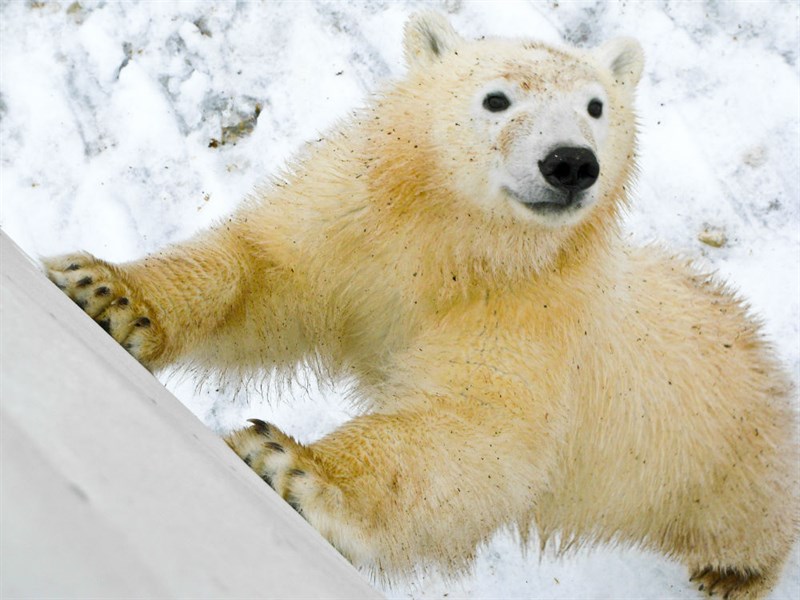
The intruder is a frisky two year old male who seems to want to play. Deprived of the companionship of his own species, he opts for human company and repeatedly jumps up at the side of the vehicle, standing on his hind legs, showing his face at the open window. I'm no more than a few feet away, so close that I can feel his breath on my face, and I get the perfect photograph. The Tundra vehicle has massive wheels, designed high enough to keep everyone safely out of reach, but I treasure this exhilarating encounter.
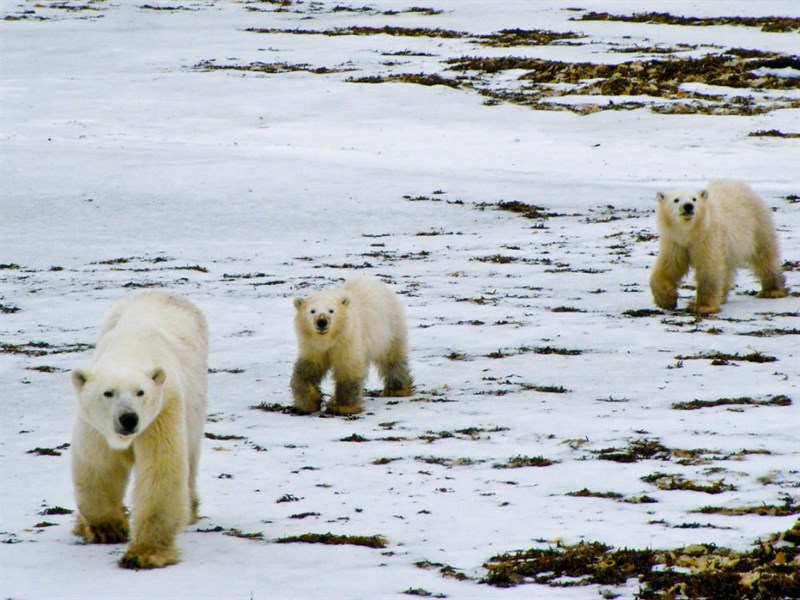
As we move across the tundra, I realise that there are bears on all sides, all keeping a safe distance from each other. They're mainly mothers and their cubs and we watch the young ones frolic in the snow whilst the mums nonchalantly snack on kelp, keeping a watchful eye out for intruders. We could easily spend all day here, but our guide is keen to show us some big males and he's got a shrewd idea of where they might be. Half an hour later we're spectators at a polar bear wrestling match, two of them testing each other's fighting skills and strengths in a playful display of force. These are huge scarred beasts, not to be tangled with, and I begin to understand why they're the kings of the Arctic.
It's a long day on the Tundra Buggy but never boring. Just when you think you've run out of bears, you turn the corner and there's the next lot to entertain you. And the great thing is you don't feel you're intruding as they seem happy to ignore you and just get on with polar bear life. I'd had low expectations, thinking I might only see one or two, but couldn't have been more wrong. After another day on the tundra my personal polar bear tally totals over fifty.
All too soon it's time to head back to Winnipeg and this time I'm taking the train.
Work on the railway line began in 1886 but was only completed in 1929 and the Northern part of track is laid directly over the Permafrost. Night falls and we gather for dinner in the restaurant car - it's more like a diner than a restaurant but the food is surprisingly tasty and service is brisk.
Meanwhile my cabin has been converted to a comfortable bedroom, chairs and table stashed away, mattress folded down, covered with duvet and sheets. The night is quiet and the gentle roll of the train as it crosses the tundra means I sleep well. Morning sees the landscape changed from barren snowy wasteland to pine forests, frosted with white, and pools half iced over.
After breakfast we stop in Thompson, an area first inhabited by nomadic Paleo-Indian hunters in 6000 BC. The present town dates from 1957, after huge nickel deposits were found here, and the population is now around 13,000. There's time to stretch my legs, and some take the opportunity to walk part of the town's 'Spirit Way', a two kilometre pathway with 16 points of historic interest. Not me though, I'm keen not to miss the train.
The final part of the journey loops into Saskatchewan before returning to Manitoba. We cross flat wide open prairies, the dark fertile soil visible at the surface, coupled with burnt stubble and hay bale. The fields stretch to the horizon occasionally broken up by farmsteads protected by rings of Birches. Long lumbering freight trains pass from the opposite direction and there are few people, just the occasional cow and horse.
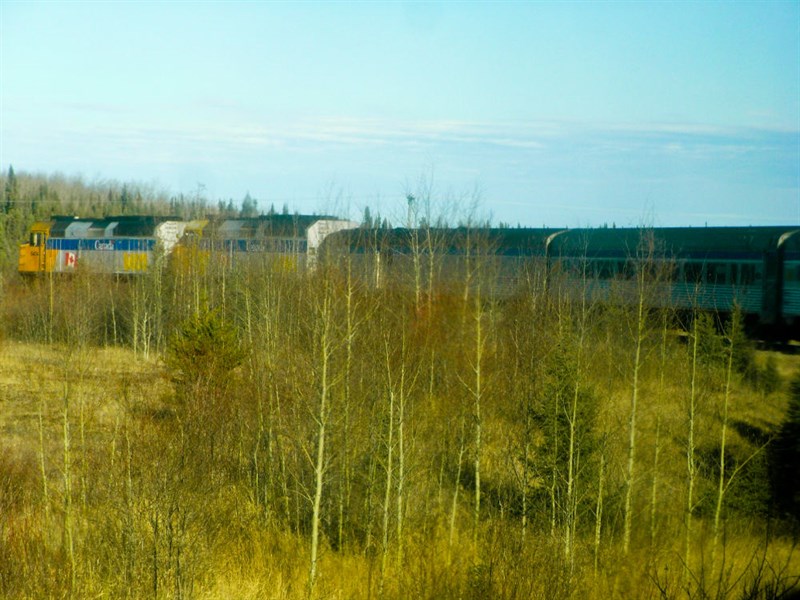
It's late afternoon when I arrive back in Winnipeg and I'm strangely reluctant to leave the train, my comfortable home for the last 36 hours. Travelling this 1,000 mile journey by rail, seeing the landscape change from tundra to Boreal forest to prairie, gives you a great sense of the adventure of travelling in the frozen North. It's not quite as tough as the original trappers had it, but it's far more fun than taking the plane. And it's surprising how many friends you make on the way.
Please note that travellers booking our Polar Bears of Canada tour will take the Canadian National Railway overnight from Churchill to The Pas, then the Hudson Bay Railway to Winnipeg - a journey of three days at the end of your polar bear experience.
Rupert Parker is TV Producer, cameraman, photographer and journalist. Although his special interest is food, wine and travel, he writes about everything from wilderness adventure to gourmet spa tours. His articles appear, not only in British national newspapers and magazines, but also in magazines in China and India. Follow him on Twitter @planetappetite.

